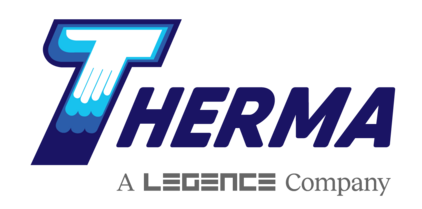The modern commercial HVAC industry is driven by the quest to achieve higher efficiencies, better comfort and a lower environmental impact. In fact, commercial buildings account for about 40 percent of carbon dioxide emissions, and HVAC systems consume 30 percent of a building’s total energy usage.[1] Variable Refrigerant Volume (VRV) technology presents an intriguing alternative to conventional heating and cooling systems in certain applications.
Understanding VRV
Also known as Variable Refrigerant Flow (VRF), VRV refers to the capacity to control the flow of refrigerant to multiple evaporators of varying capacities. This allows for exceptional individual comfort contouring and the ability to simultaneously provide both heating and cooling in different zones.
In general, VRV systems are similar to ductless multi-splits where one outdoor condenser is connected to several evaporators. While multi-splits are configured for simple on/off operation in response to a single controller, VRV systems adjust the flow of refrigerant to each indoor evaporator based on demand. The key element is a pulse modulating valve (PMV) regulated by a microprocessor that receives information from thermistor sensors located inside each indoor unit.
 Based on the call from the indoor sensor, a control wire sends signals to the condenser so the compressor speed is matched precisely to the total heating and cooling load requirements. VRV units use scroll inverter compressor technology to operate as many as 48 different indoor units, depending on the manufacturer. Multi-VRF systems can also be linked directly to centralized controllers so systems and facilities can be monitored from a single location.
Based on the call from the indoor sensor, a control wire sends signals to the condenser so the compressor speed is matched precisely to the total heating and cooling load requirements. VRV units use scroll inverter compressor technology to operate as many as 48 different indoor units, depending on the manufacturer. Multi-VRF systems can also be linked directly to centralized controllers so systems and facilities can be monitored from a single location.
VRV systems are available in two basic formats:
- Two-Pipe Systems: Two-pipe VRV systems are very similar to multi-split ductless AC or heat pump units. A two-pipe VRV may consist of multiple indoor evaporators of varying styles and sizes connected to an outdoor condensing unit with a common refrigerant piping network. While both heating and cooling are provided, all of the indoor units must be in the same mode for the system to operate properly. However, the temperature in each zone can be set independently within the same mode. Two-pipe systems are suitable for applications where the temperature variance between the zones is minimal.
- Three-Pipe Heat Pump Systems: While a three-pipe VRV system resembles a two-pipe system from a configuration standpoint, the indoor units can be set separately in either the heating or cooling mode. The third pipe aids in the recovery of waste heat from areas that are being cooled and passes it on to other areas that require heating.
When Should You Consider Using a VRV System?
 Designing and engineering a VRV system is a complex process, and the use of the technology is very application specific. In general, VRV can be integrated into emerging technologies such as building automation systems and the Internet of Things (IoT). The consistent upscaling of the technology helps to make cooling and heating operations easier for providers and more maintenance and cost efficient for end users. Here are some of the more common applications where VRV is currently being used:
Designing and engineering a VRV system is a complex process, and the use of the technology is very application specific. In general, VRV can be integrated into emerging technologies such as building automation systems and the Internet of Things (IoT). The consistent upscaling of the technology helps to make cooling and heating operations easier for providers and more maintenance and cost efficient for end users. Here are some of the more common applications where VRV is currently being used:
- Spaces with inadequate cooling and heating capacity
- Older buildings with limited space to install conventional HVAC equipment and ductwork
- New buildings where floor space is at a premium. VRV systems reduce floor-to-floor height requirements and free up floor space normally occupied by mechanical equipment
- Inefficient HVAC systems with high operational costs
- VAV systems with electric heat back-up
- Buildings with substandard air distribution systems
- Buildings with significant heating requirements
- Systems with inefficient fan operation
- Projects where Energy Star, LEED, BEAP or other energy efficiency certifications are required
From a practical standpoint, VRV systems work well in small projects with ambitious energy efficiency baselines. Larger buildings with varying exposures and loads are also excellent candidates for VRV installation. Finally, VRV is well-suite for older buildings with space considerations and multiple fresh air pathways.
Benefits of VRV Technology
 Building science continues to focus on the design and engineering of tight structures with a modest carbon footprint. VRV technology is tailored to meet those goals since it provides unparalleled efficiencies. In fact, tests show VRV systems in the cooling mode consume up to 70 percent less energy than similarly sized conventional VAV systems.[2]
Building science continues to focus on the design and engineering of tight structures with a modest carbon footprint. VRV technology is tailored to meet those goals since it provides unparalleled efficiencies. In fact, tests show VRV systems in the cooling mode consume up to 70 percent less energy than similarly sized conventional VAV systems.[2]
In addition to energy efficiency, VRV provides a variety of compelling benefits:
- VRV systems are available in a wide array of styles, including wall, floor, under ceiling and recessed ceiling models
- Indoor and outdoor units can be spaced as far as 200 feet apart[3]
- Inverter compressors and smart controls provide exceptional comfort and efficiency
- VRV systems comply with ASHRAE Standards 15 and 34[4]
- Both large, open areas and small rooms can be served by a single system
- Systems are available in cool only, heat pump and heat recovery configurations
- Heat recovery systems can heat and cool different areas of the building simultaneously
- Units can be controlled individually, centrally or in groups
VRV Systems Provide Flexibility and Efficiency
Environmental concerns have compelled HVAC designers and mechanical engineers to reconsider the impact of climate change on future load requirements. The flexibility of VRV offers a way to enhance efficiency, lower utility costs and quickly adapt to unexpected changes in operational parameters. VRV systems present the same kind of design and installation challenges found in industrial refrigeration systems and large chillers. Therma has the expertise to engineer and install a VRV system that will provide exceptional value, superior comfort and an extended service life.
By William Busse
William Busse has more than 30 years experience in the construction industry in sales, contracting, distribution and manufacturing. He has an extensive background in the mechanical contracting industry, largely from the distribution and manufacturing sides of the business. He has had deep involvement with a variety of large-scale commercial/industrial mechanical contractors, particularly related to value engineering. This includes process piping, high-pressure steam, cryogenics, thermal insulation and commercial/industrial HVAC.
Sources:
- https://www.gsa.gov/cdnstatic/GPG_VRF_Report_-_FINAL_DRAFT_4-16-13.pdf
- https://www.researchgate.net/publication/307981725_Comparative_Study_of_the_Cooling_Energy_Performance_of_Variable_Refrigerant_Flow_Systems_and_Variable_Air_Volume_Systems_in_Office_Buildings
- http://seedengr.com/Variable%20Refrigerant%20Flow%20Systems.pdf
- https://www.daikinac.com/content/assets/DOC/White-papers-/TAVRVUSE13-05C-ASHRAE-Standard-15-Article-May-2013.pdf
- https://www.linkedin.com/pulse/variable-refrigerant-flow-air-conditioning-systems-vrf-hafnaz-sabeer







